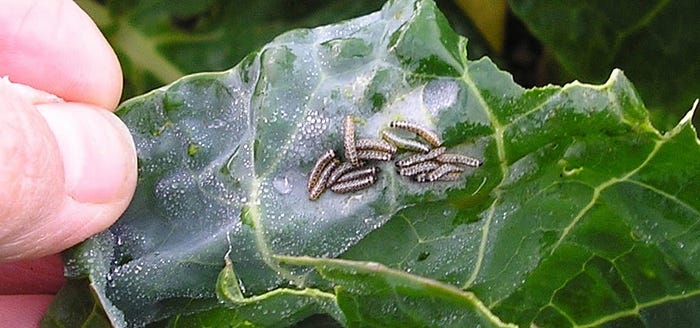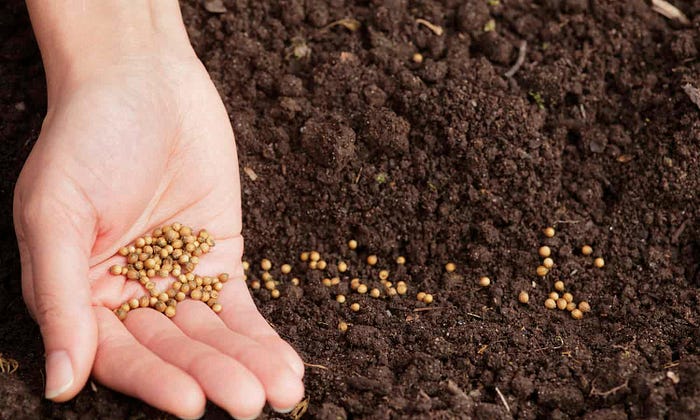Introduction
In our modern whirlwind of life, the yearning for a healthier, more sustainable lifestyle has ignited a surge of interest in organic home gardening.

Whether you possess an expansive backyard or a petite balcony, organic home gardening presents a gratifying path to connect with nature, cultivate your own pesticide-free and fresh food, and play a role in nurturing a greener planet.

This article stands as your comprehensive companion, ushering you into the realm of organic home gardening, from fundamental principles to invaluable insights for those taking their initial steps.
Grasping the Essence of Organic Home Gardening
Defining Organic Home Gardening
Organic home gardening entails nurturing plants without resorting to synthetic pesticides, herbicides, or genetically modified organisms (GMOs).

Instead, it thrives on natural mechanisms to sustain soil fertility and manage pests, emphasizing the significance of diversity and sustainability.
The Perks of Organic Gardening
Organic gardening showers us with a multitude of benefits, including the creation of more nourishing and flavorsome produce, the reduction of chemical exposure, and the establishment of a thriving ecosystem within the boundaries of your own backyard.

Deciding: Organic or Conventional Gardening?
Picking organic gardening signifies a commitment to both the environment and your personal well-being.

While conventional gardening might promise speedier outcomes, organic gardening champions long-term soil health and the assurance of a safer food supply.
Setting the Stage in Your Garden
Choosing the Perfect Locale
The triumph of your garden hinges upon the art of selecting the right spot. Opt for an area that basks in abundant sunlight, boasts adequate drainage, and is conveniently accessible for regular nurturing.
Nurturing Soil and Enrichment
Robust soil stands as the cornerstone of a flourishing organic garden. Test your soil’s pH levels, infuse it with compost and organic matter, and ensure adequate drainage to craft an optimal growth environment.

Picking Your Plants: A Primer
Opt for plants that thrive in your specific climate and soil composition. Consider initiating your journey with user-friendly crops like tomatoes, basil, and lettuce.

Indispensable Tools and Equipment
Foundational Gardening Tools
Setting out on your voyage of organic home gardening necessitates a handful of essential tools:
Hand Trowel: Perfect for planting and transplanting delicate seedlings.
Pruning Shears: Vital for trimming and sculpting plants.
Garden Fork: Employed for aerating soil and turning compost.
Watering Can or Hose: Assures that your plants receive just the right amount of moisture.

Gloves: Shields your hands from dirt and potential irritants.
Rake: Aids in leveling the soil and gathering debris.
Wheelbarrow: Facilitates the movement of soil, compost, and plants.
Irrigation Systems: A Deeper Dive
Precision in watering stands as a vital ingredient in the recipe for your organic garden’s triumph. Ponder over these methods of irrigation:
Drip Irrigation: Channels water directly to the roots, minimizing water wastage.

Soaker Hoses: Dispenses water along their length, fostering profound root growth.
Rain Barrels: Collect rainwater to nourish your garden.
Mastering the Art of Composting
Composting 101: Transforming Waste into Gold
Composting stands as a pillar of organic gardening. Amass kitchen leftovers, yard clippings, and even paper items to forge nutrient-rich compost. Regularly turn the pile to promote decomposition and aeration.

Planting Techniques
Direct Seeding vs. Transplanting
Direct Seeding: This technique entails sowing seeds directly into the garden soil. It suits crops that don’t transition well when transplanted, such as root vegetables and beans. Adhere to the instructions on the seed packet for proper spacing and depth.

Transplanting: Initiate seeds indoors within trays or pots, enabling them to develop into young plants. Shift the seedlings to the garden post the final frost date. This approach is ideal for plants that demand an extended growing season or added protection.

Harmonizing Nature through Companion Planting
Companion planting is a strategic arrangement of plants to mutually benefit one another. For instance:
Tomatoes and Basil: Basil fends off pests that often plague tomatoes.
Carrots and Onions: Carrots and onions share a symbiotic relationship, deterring pests from one another.
Marigolds and Everything: Marigolds serve as natural pest deterrents and can be dispersed throughout the garden.
Unveiling the Craft of Indoor Seed Starting
Kickstarting the growth indoors offers you a head start on the planting season. Adhere to these steps:
Opt for Quality Seeds: Choose organic, non-GMO seeds from reputable sources.
Utilize Seed Trays or Pots: Fill them with a seed-starting mix that facilitates proper drainage.

Ensure Adequate Light: Position them under grow lights or near a south-facing window.
Transplant with Precision: Once seedlings sprout 2–3 true leaves, shift them to larger containers before relocating them to the garden.
Cherishing Your Organic Garden
The Wonders of Mulching: Benefits and Application
Mulching brings a slew of benefits to your garden:
Weed Inhibition: Mulch thwarts weed growth, diminishing competition for nutrients and water.
Moisture Preservation: Mulch aids in retaining soil moisture, reducing the need for frequent watering.

Temperature Regulation: It insulates the soil, maintaining cooler temperatures during summer and warmth in winter.
Blanket your plants with a layer of organic mulch, like straw, wood chips, or leaves, to relish these advantages.
Prudent Watering: The Do’s and Don’ts
Meticulous watering holds the key to plant vitality. Adhere to these guidelines:
Water Deeply: Thoroughly saturate the soil, stimulating robust root growth.

Morning Watering: Hydrate your plants early in the morning to minimize evaporation and fungal growth.
Forego Overhead Watering: Moist foliage can invite disease; concentrate on the soil.
Natural Pest Management in an Organic Realm
Pests pose a frequent challenge in any garden. Rather than depending on chemical pesticides, consider these natural alternatives:
Hand Removal: Pluck pests by hand, particularly in the early hours of the day.

Beneficial Insects: Introduce ladybugs, lacewings, and other predators to regulate pests.
Companion Planting: Specific plants ward off pests, offering a natural deterrent.
Nurturing the Essence of Vibrant Soil
The Soil-Food Web: An Equilibrium to Cherish
Thriving soil teems with life, from minute bacteria to industrious earthworms. This intricate network, known as the soil food web, remains pivotal for nutrient circulation and plant well-being.

Steer clear of chemical fertilizers that disrupt this balance, and favor compost and organic matter instead.
Revitalizing Your Garden through Cover Crops
Cover crops, sometimes known as green manure, comprise plants cultivated primarily for the benefit they bestow upon the soil. They thwart erosion, suppress weeds, and enhance soil structure.

Joint cover crops include clover, rye, and buckwheat. When it’s time to plant your main crops, till the cover crop into the soil to enhance its richness.
Unveiling the Enchantment of Vermicomposting
Vermicomposting, or worm composting, stands as a remarkable method to metamorphose kitchen scraps into nutrient-dense compost. Redworms shine as the stars of this process, breaking down organic matter into “black gold” that nourishes your garden. Establish a worm bin in a shaded corner, and provide your worms with a balanced diet of fruit and vegetable scraps.

Harvesting and Beyond
Discerning the Ideal Harvest Time
Harvesting at the optimal moment ensures the pinnacle of flavor and nutritional value. Here are some general markers for common crops:
Leafy Greens: Gather when leaves are tender and youthful.

Root Vegetables: Harvest once roots attain an appropriate size, evading excessive growth.
Tomatoes: Pluck when they display full color and a slight softness upon touch.
Post-Harvest Etiquette
Observing proper post-harvest care extends the freshness of your yield:
Handle with Tender Care: Prevent bruising or harming fruits and vegetables.
Cooling: Stow harvested produce in an excellent location or within a refrigerator.
Drying: Gently pat leafy greens dry before storage to avert spoilage.
Preserving Seeds for the Future
Saving seeds empowers you to safeguard heirloom varieties and trim expenses. Here’s how:
Choose Open-Pollinated Plants: Hybrids yield inconsistent progeny.
Harvest Fully Matured Seeds: Allow seeds to fully mature on the plant before collection.
Dry and Preserve: Ensure thorough drying of seeds, followed by storage in a cool, dry spot within labeled envelopes.
Conclusion
Embarking on the odyssey of organic home gardening flings opens the doors to a universe of connection, sustainability, and the pleasure of nurturing existence.

As you’ve grasped, organic gardening surpasses the mere production of fresh and pesticide-free sustenance; it involves nurturing a thriving ecosystem, fostering robust soil, and making a contribution to a more verdant planet.

From internalizing the tenets of organic gardening to mastering planting techniques, caring for your garden, and reaping the dividends of your labor, each stride ushers you closer to a harmonious bond with the natural world.
Hence, seize your gardening tools, delve into the earth, and allow your garden to bear witness to the prowess of human hands working in consonance with nature.

Regardless of whether you command a spacious yard or a cozy balcony, the principles of organic gardening can be tailored to any scale. As you witness seeds sprouting, plants flourishing, and vibrant life taking root, you’ll discover that your garden evolves into a realm of tranquility, growth, and inspiration.
So, muster the courage to sow the seeds of sustainability, nurture the soil of stewardship, and gather the harvest of your unwavering commitment. As you embark on this verdant journey, may your garden flourish, and may your bond with the natural world deepen.
Frequently Posed Queries
1. Can I engage in indoor organic gardening?
Absolutely! You can nurture herbs, microgreens, and even certain vegetables indoors using containers and proper lighting.
2. How can I best deter pests from my garden?
Promote the presence of natural predators like ladybugs, cultivate a diverse array of plants, and adhere to good garden hygiene.
3. What’s the expected timeframe for compost to become usable?
Compost can undergo decomposition anywhere from several months to a year, contingent upon factors such as temperature and constituent materials.
4. Can I utilize regular soil for initiating indoor seeds?
It’s advisable to employ a specialized seed-starting mix, as it ensures proper texture and drainage for tender seedlings.
5. Does organic gardening demand more time than conventional approaches?
While organic gardening might necessitate a tad more attention to soil vitality and pest management, the rewards in terms of taste, sustainability, and environmental contribution far outweigh the effort.
If you need help ranking your blog or website with my exclusive writing services, contact us using the link below:




